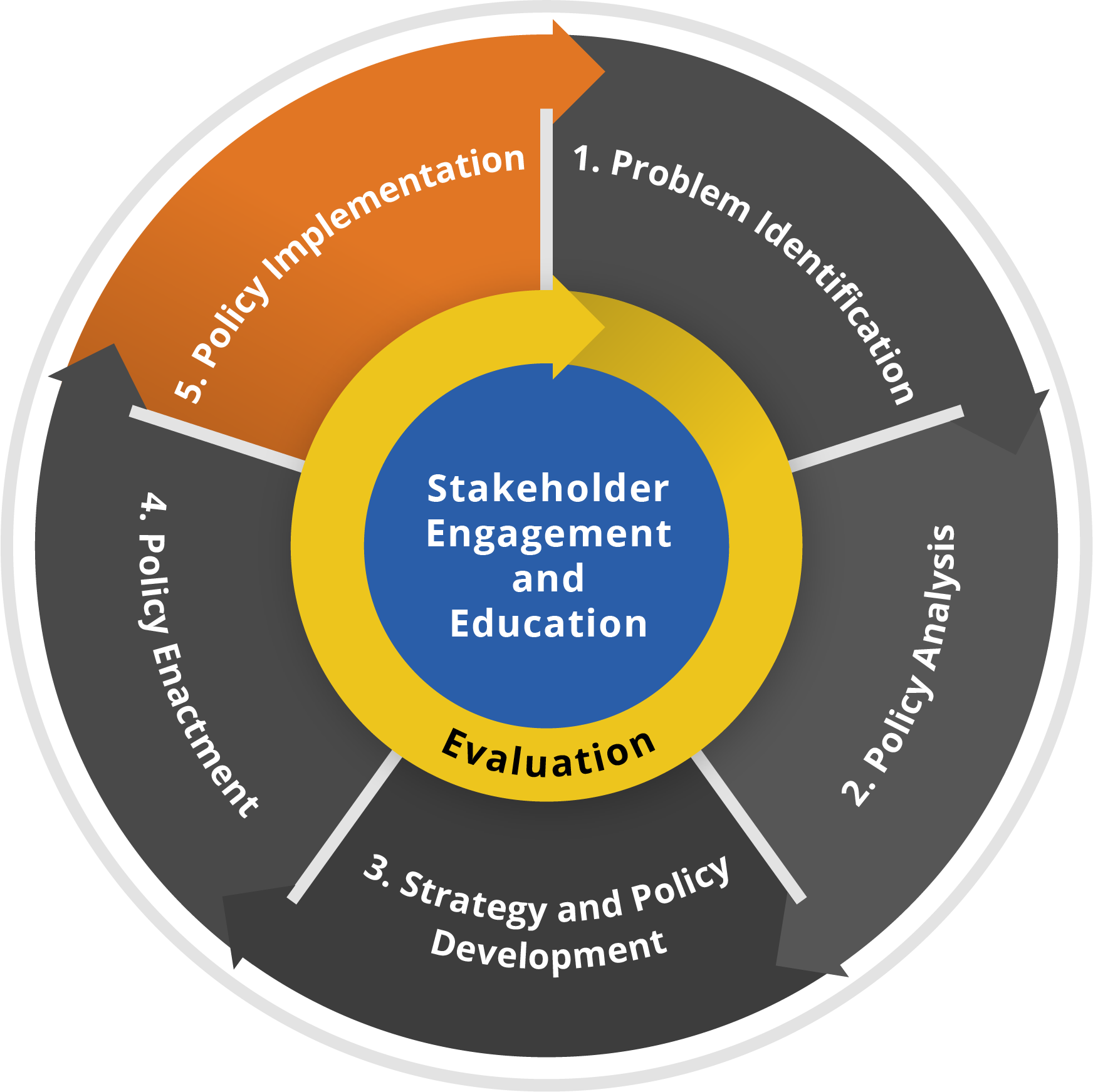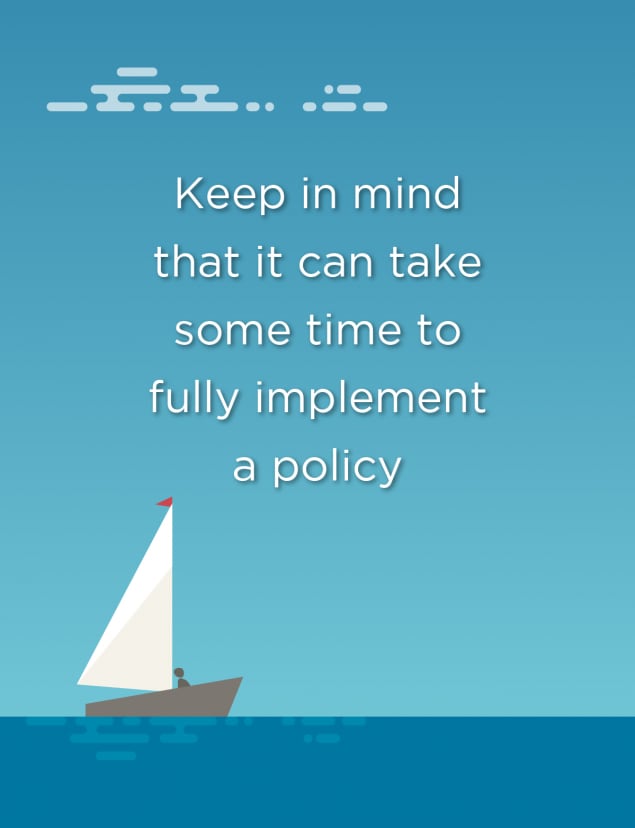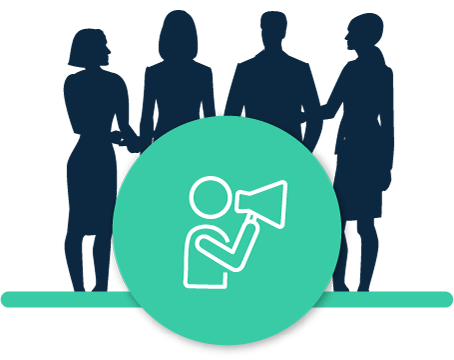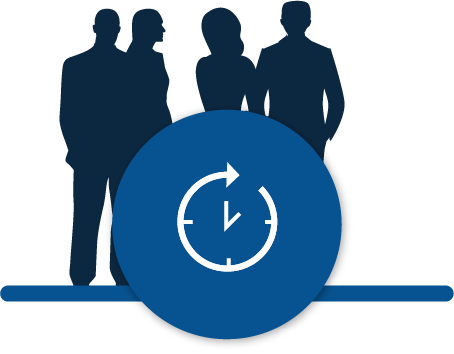Policy Implementation
Your policy has been enacted, and you are ready to implement it. If your policy hasn’t been enacted yet, visit the Policy Enactment page.

What is policy implementation?
Enactment alone doesn’t ensure that a policy will be successful. Additional steps may be needed to implement the policy in a way that can increase the likelihood the policy will achieve its intended outcomes.
The implementing organization and stakeholders may:
- Educate the people or organizations affected by the new policy
- Change pre-existing administrative operations and systems (or create new ones)
- Monitor and/or enforce the policy as needed
Why is policy implementation important?
Policies won’t work if the process stops at enactment.
Who can play a part in policy implementation?
There is a wide range of people and organizations that can be involved in policy implementation, depending on the level of enactment (from local to national) and the type of policy (from regulation to statute).
As you implement the policy, stakeholders can help:


Identify and coordinate resources and support
For example, one of your partners may coordinate or develop educational and communication activities.

Provide support for large-scale changes to existing processes
For example, a partner might help set up a website with information and implementation guidance.

Plan for policy, programmatic, and fiscal sustainability
For example, a partner might create a strategic plan that identifies where funding will come from once initial funds are exhausted.
While planning for implementation, how can you increase the likelihood of achieving the policy’s intended outcomes?
- Keep the desired outcomes in mind.
Before implementation starts, everyone needs to be clear about the goals of the policy. - Identify resources that can help you implement the policy.
This can include necessary funding, staffing, and infrastructure. - Define who is involved and who does what during implementation.
Plan who will be involved in implementation and what their roles and responsibilities will be. Specifically, you want to identify:
- The individual or organization that will lead implementation of the policy
- Roles and responsibilities of partners and stakeholders
- Opportunities and processes for collaboration
- Current policies to ensure they are not in conflict with the new policy
It helps to identify how, when, and by whom implementation will be assessed. Monitoring of implementation keeps everyone involved aware of any possible barriers—as well as any intended and unintended impacts of the work.
After implementation, resources and other supports from stakeholders may decrease. Policy sustainability benefits from planning for these changes from the start of the policy process. Planning for sustainability can involve programmatic, administrative, fiscal, and other key elements of the policy.
How do you know you have successfully planned for policy implementation?
- People involved in implementation of the policy understand its goals
- You identified the inputs and resources used to implement the policy
- You’ve documented the roles and responsibilities of those involved in the implementation of the policy
Resources
Dating Matters Capacity Assessment and Planning Tool (DM-CAPT)
This tool can help you assess capacity for approaches to preventing teen dating violence—but its framework can also be applied to other public health problems. (Capacity refers to the information, skills, resources, abilities, and supports needed to develop, evaluate, and sustain a public health initiative.)
